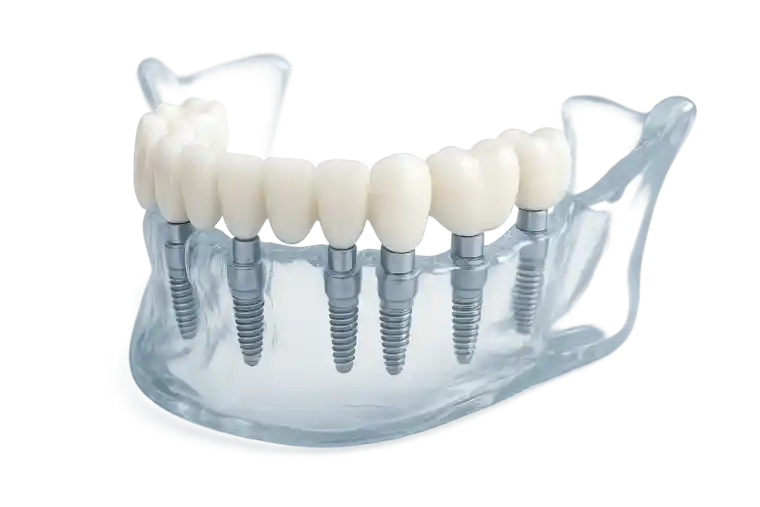Orthopedic Stem Cell Therapy in Istanbul, Turkey – Excellent Help for Joint Injuries

Written by Prof. Dr. Mehmet Çetinkaya
We offer personalized orthopedic stem cell treatment packages for orthopedic conditions, starting from 5,000 EUR for 50 million high-quality umbilical cord blood (UCB)-derived mesenchymal stem cells. This represents a high therapeutic cell count, derived under GMP-certified laboratory conditions, and administered exclusively under my care. The precise protocol – including the number of cells, use of exosomes, and treatment frequency – is always tailored to the individual’s diagnosis, biology, and recovery goals. No two joints are the same – and no two healing paths should be either.
Why Healing Needs More Than Rest
As an orthopedic specialist with over two decades of experience in treating joint injuries, ligament tears, chronic pain, and sports-related trauma, I’ve seen one thing over and over again: patients want more than temporary relief. They want true recovery. They want to get back to life – fully, freely, and without limits. Whether it’s a marathon runner sidelined by a torn meniscus, or a retiree struggling to walk due to cartilage degeneration, the question they ask is always the same: “Is there a way to heal, not just manage?”
In recent years, stem cell and exosome-based therapies have given us a powerful new answer.
In my practice in Turkey, I have witnessed remarkable improvements in patients who once believed surgery was their only option. These regenerative approaches are not futuristic concepts anymore – they are real, they are available, and when applied responsibly, they can support the body’s own capacity for healing.
But I always emphasize: this is not a miracle. It is medicine – grounded in science, individualized in approach, and carefully matched to the patient’s condition. In this article, I will walk you through what stem cells and exosomes actually do, who they’re for, what to expect, and how we apply them in orthopedic and sports medicine.
Table of Contents
Understanding What Stem Cells Do & How Orthopedic Stem Cell Therapy Works
Let me explain this in the way I would during a conversation with one of my patients – not in scientific jargon, but in language that makes sense.
Stem cells are something like nature’s emergency response team. They haven’t yet committed to being any one type of cell, which means they have the remarkable potential to become what your body needs most – whether that’s cartilage, tendon, muscle, or even bone. When we place them into a damaged joint or injured tissue, they don’t act randomly. Under the right conditions, they begin to support and even spark regeneration – not by covering up damage, but by helping the body rebuild from within.
In my clinic, we work primarily with mesenchymal stem cells (MSCs). These can be sourced from a patient’s own fat tissue or bone marrow, or from ethically donated umbilical cord tissue – each with its own advantages, depending on the case.
Then there’s something many patients haven’t heard of before: exosomes. These aren’t cells – they’re tiny particles that stem cells release to communicate with the rest of the body. Think of them as molecular messengers, carrying instructions that reduce inflammation, stimulate healing, and regulate immune responses. While stem cells do much of the rebuilding, exosomes orchestrate the process, helping the body respond more efficiently and with greater precision.
Together, stem cells and exosomes form a kind of biological repair alliance – one working at the structural level, the other at the signaling level. When used in the right hands, this combination offers a powerful, patient-specific path toward recovery.
Exosomes, on the other hand, are microscopic messengers. They are not cells themselves, but tiny vesicles released by stem cells. Inside these vesicles are proteins, RNA, and signaling molecules that communicate healing instructions to surrounding cells. You can think of them as the “text messages” of the immune and repair systems.
Together, stem cells and exosomes act like a biological repair kit. Stem cells can help rebuild. Exosomes can recalibrate inflammation, promote cell communication, and trigger natural regeneration.
When is Orthopedic Stem Cell Therapy Considered?
I typically recommend stem cell or exosome-based interventions when:
- Conservative treatments (physical therapy, NSAIDs, cortisone) have failed
- Surgery is not yet required, or a patient prefers to avoid it
- There is still a biological window for tissue regeneration
- The condition is degenerative (e.g., osteoarthritis) or caused by trauma (e.g., partial ligament tear)
Common indications in my practice include:
- Knee osteoarthritis
- Shoulder injuries (rotator cuff inflammation or microtears)
- Meniscus injuries
- Tendonitis (e.g. Achilles or patellar tendon)
- Muscle strain or sports overuse injuries
- Cartilage damage in hip, ankle, or elbow joints
- Post-surgical recovery support
One important point: regenerative therapy is not about replacing surgery. It’s about delaying, enhancing, or sometimes avoiding it – depending on the context.
What Many Patients Don’t Realize at First – Honest Insights Before Starting with Orthopedic Stem Cell Therapy
When I think back to the early days of introducing stem cell and exosome treatments into my practice, one thing became clear quite quickly: people came to me with genuine hope – but often with expectations that didn’t quite match the medical reality. And I don’t blame them for that.
In today’s world, where headlines promise miracle recoveries and social media amplifies every success story, it’s easy to assume that regenerative therapy is some kind of magic bullet. But here’s the truth I always share, gently but firmly: real healing doesn’t come from shortcuts. It comes from the body’s own complex, gradual process – and that process needs the right conditions, guidance, and time.
Some patients are surprised when I explain that results aren’t immediate. They might have read online that pain vanishes in days or that cartilage grows back like new. Others assume that every type of stem cell injection is equal, or that surgery will now be completely unnecessary. These are natural assumptions – but they can create disappointment if not corrected early.
My role as a physician is not only to treat, but also to educate. I’d rather see a patient well-informed and cautious than overly optimistic and let down. The good news? With the right mindset, most patients find this therapy both empowering and rewarding – because it respects their biology and supports genuine repair, not just symptom control.
❗ Misconception 1: “This will instantly fix everything.”
No, it won’t. This therapy is not an instant fix. Unlike painkillers or steroid injections that suppress symptoms quickly, regenerative treatments work gradually – by restoring the body’s function at the cellular level. You may begin to notice improvement after a few weeks, with the full benefit emerging over several months.
❗ Misconception 2: “This is guaranteed to avoid surgery.”
In some cases, yes – regenerative therapy can delay or even replace the need for surgery. But that depends on the stage of damage, age, activity level, and how well the body responds. I always assess MRI results, clinical symptoms, and personal goals before recommending this path.
❗ Misconception 3: “All stem cell treatments are the same.”
Unfortunately, not true. The source of the cells, their purity, how they are prepared, and whether exosomes are added – all of this makes a difference. I work only with certified laboratories under GMP protocols that ensure cell viability, sterility, and ethical sourcing.
Educating patients is part of my responsibility. I want every person to know exactly what this therapy can – and cannot – do.

How the Orthopedic Stem Cell Therapy Works – A Physician’s Perspective
Let me now walk you through how we apply stem cell and exosome therapy in real clinical settings. While every case is unique, the process generally follows a clear structure.
Step 1: Comprehensive Evaluation
Before anything, we conduct a detailed clinical exam and review of imaging (MRI, ultrasound, X-rays). We look at the grade of degeneration, history of trauma, current symptoms, and any prior interventions. If regenerative therapy is suitable, we move to the next stage.
Step 2: Cell Sourcing and Preparation
We either use autologous stem cells (from your own body, e.g., bone marrow or fat tissue), or allogeneic preparations (from carefully screened donors, such as umbilical cord-derived MSCs). For many orthopedic cases, we use a hybrid approach: MSCs combined with purified exosomes for enhanced communication and faster regulation of inflammation.
All materials are prepared in GMP-certified labs, and undergo rigorous pathogen screening, viability testing, and cryopreservation if needed.
Step 3: Injection Under Guidance
Once prepared, the therapy is delivered via image-guided injection – using ultrasound or fluoroscopy for precision. This ensures the regenerative agents are delivered exactly where they are needed: into the joint space, tendon sheath, or damaged soft tissue.
Step 4: Recovery and Follow-Up
Unlike surgery, there’s no general anesthesia and typically no downtime. Patients return home the same day. However, we always advise relative rest for several days, followed by a graduated physical therapy program to encourage integration of the healing process.
Follow-ups are scheduled at 4 weeks, 3 months, and 6 months, with periodic imaging if necessary. Pain levels, joint mobility, and function are tracked over time.

Expected Results from the Orthopedic Stem Cell Therapy – And When You’ll See Them
One of the most common questions I receive is:
“How long until I feel better?”
Here’s the honest answer: regenerative healing takes time.
Initial Phase (0–2 weeks)
- Mild swelling or soreness at the injection site
- Inflammatory signaling begins (this is good)
- No major functional changes expected yet
Regeneration Phase (2–8 weeks)
- Reduced pain
- Increased range of motion
- Early tissue-level healing (especially in tendon and cartilage zones)
Remodeling Phase (2–6 months)
- More stable joint mechanics
- Improved strength and endurance
- Full benefit visible around month 4–6
That said, each body is different. Athletes often respond faster due to baseline fitness and metabolic activity. Older patients with chronic degeneration may take longer.
What the Science Says about Orthopedic Stem Cell Therapy: Emerging but Promising
I always base my treatments on solid evidence – and regenerative orthopedics is no exception.
A growing number of studies support the clinical benefit of stem cell therapy for orthopedic applications:
- A 2022 meta-analysis in the American Journal of Sports Medicine found that intra-articular MSC injections reduced knee osteoarthritis pain scores significantly over 12 months, compared to placebo.
PubMed ID: 35447155 - A randomized trial in Stem Cells International (2021) observed cartilage thickness improvement and functional mobility gains in patients treated with exosome-enriched MSCs for degenerative knee disease. PubMed ID: 33664809
We’re still early in long-term data, but real-world outcomes in my clinic mirror these results – especially when combined with personalized rehabilitation.
Who Is Suitable For Orthopedic Stem Cell Therapy – And Who Should Be Cautious?
In my consultations, I always take time to determine not just who wants regenerative therapy – but who will truly benefit from it. This isn’t a one-size-fits-all solution. Patient selection is critical.
✅ Ideal Candidates:
- Active individuals with mild to moderate orthopedic injuries who want to delay or avoid surgery
- Athletes recovering from muscle or tendon injuries
- Patients with early to mid-stage osteoarthritis (e.g., knees, hips, shoulders)
- Post-surgical patients looking to speed up healing and reduce inflammation
- Younger patients with focal cartilage defects or meniscus tears
- Those seeking natural alternatives to steroids or chronic pain management
⚠️ Less Suitable – Or Requires Extra Caution:
- Advanced osteoarthritis with complete cartilage loss may not respond well
- Severe deformities or instability often require surgical correction first
- Patients with autoimmune disorders (e.g., rheumatoid arthritis) need individualized protocols
- Chronic smokers or those with uncontrolled diabetes may have reduced healing potential
- Anyone expecting “overnight miracles” – mindset matters in recovery
That’s why my team and I conduct an in-depth assessment: labs, imaging, physical exams, and in some cases, regenerative fitness scoring. We want to ensure that patients receive treatments tailored to both their biology and their goals.
Step-by-Step: What to Expect & How Orthopedic Stem Cell Therapy work’s
1. Initial Consultation
We start with a 45-minute appointment, where I review your medical history, pain pattern, activity level, and previous therapies. Imaging (MRI or ultrasound) is essential to confirm the diagnosis and stage of degeneration. We also assess metabolic and systemic factors that affect healing.
2. Patient Education & Consent
If you’re a candidate, we go through every detail of the therapy: what it is, how it works, potential benefits, and limitations. I encourage patients to ask questions – and often invite family members into the conversation. You’ll receive written documentation, and we won’t proceed without your informed, pressure-free consent.
3. Preparation and Planning
Depending on the protocol, we schedule the treatment:
- Autologous stem cells: We perform a minor liposuction or bone marrow aspiration in a sterile outpatient setting.
- Allogeneic MSCs + exosomes: We coordinate with a certified biobank that ships cryopreserved material directly to our clinic.
4. Injection Day
On the day of the procedure:
- You arrive at our regenerative suite (within a fully licensed hospital)
- Local anesthesia is applied to minimize discomfort
- Using ultrasound or fluoroscopic guidance, we inject the material into the affected area
- The process takes 20–30 minutes, and you rest under observation for 1 hour
No sedation is required. You return home the same day with post-procedure instructions.
5. Recovery & Follow-up
Our protocol includes:
- Rest and joint offloading for 48–72 hours
- Tailored physiotherapy starting from Week 1
- Anti-inflammatory diet and supplementation (if needed)
- Follow-ups at 1, 3, and 6 months – including pain scores, mobility tests, and functional assessments
Patients receive direct access to our team throughout the healing phase. We don’t just “inject and forget” – we accompany you through recovery.
What Patients Say – Real Experiences from Orthopedic Stem Cell Therapy
“I tore my rotator cuff six months before my wedding. I wanted to avoid surgery and tried exosome therapy with Prof. Çetinkaya. At month three, I was pain-free and back in the gym. I danced at my wedding with no fear.”
* Aylin K., 34, amateur tennis player
“As a 59-year-old runner with knee osteoarthritis, I was skeptical. But after my MSC treatment, I started walking 8 km again without pain. Not a miracle — but the closest thing I’ve had to one.”
* Thomas S., 59, semi-retired teacher
These voices matter more than brochures or charts. They reflect real-world success, tempered by realism, supported by consistency.
Quality, Safety & Ethical Commitment
- ✅ Treatments performed in accredited, sterile hospital settings
- ✅ All biological materials sourced from GMP-certified laboratories
- ✅ Stem cells and exosomes screened for infectious agents, viability, and immunogenicity
- ✅ No unproven therapies, no offshore cell harvesting, no shortcuts
- ✅ Medical team trained in orthobiologic protocols and image-guided interventions
We refuse to promise exaggerated results. We don’t sell hope – we practice responsible medicine. My role is to protect the patient’s health first – even if that means recommending against treatment.
Final Thoughts about Orthopedic Stem Cell Therapy
In orthopedic care, our mission is not just to treat injuries – but to restore lives.
Regenerative medicine is not magic, but it offers a powerful new paradigm: instead of fighting symptoms, we support the body’s ability to heal itself. And that’s something deeply hopeful.
If you are struggling with persistent pain, have tried conservative treatments without success, and want a medically responsible opinion — I invite you to start a conversation.
There is no pressure. Just knowledge. Just guidance. Just healing, redefined.





